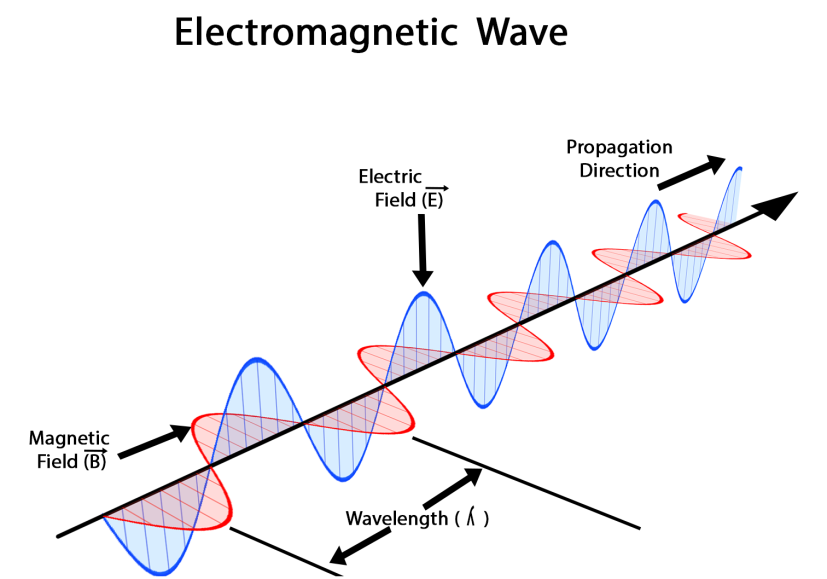
In the propagation of electromagnetic waves, the angle between the direction of propagation and plane of polarisation is
\[\begin{align}
& A{{.0}^{\circ }} \\
& B{{.45}^{\circ }} \\
& C{{.90}^{\circ }} \\
& D{{.180}^{\circ }} \\
\end{align}\]
Answer
578.7k+ views
Hint: Electromagnetic waves also called the EM waves consist of a wide range of waves of different frequencies and wavelengths. These waves carry energy when propagating through any medium. These travel at the speed of light $c$.
Complete answer:
The EM waves can also travel through vacuum, which is to say that these EM waves can still propagate in the absence of the medium. i.e. they can travel in the absence or presence of medium. These are produced by the accelerated electrically charged particles. Since electrically charged particles are affected by external magnetic or electric fields. These waves are also affected by the external magnetic or electric field. Thus the name EM waves are given. In an EM wave, the electrical and the magnetic components of the wave are in oscillation with respect to the propagation of the waves.

Polarization is a property of transverse waves, which can restrict the direction of oscillation of waves. That is to say, if we choose a plane such that it can filter all the oscillations to the particular plane, then that plane is called the plane of polarization. If two oscillations lie on the same plane, then the angle between them is $0^\circ$ and vice-versa.
Thus here, the angle between the direction of propagation and plane of polarisation is $0^\circ$.
Hence the answer is \[0^{\circ }\]
So, the correct answer is “Option A”.
Note:
The electric field, the magnetic field and the direction of propagation of the waves are perpendicular to each other. But polarization is something like filtering on of the above , and hence it will be parallel to the filtering wave.
Complete answer:
The EM waves can also travel through vacuum, which is to say that these EM waves can still propagate in the absence of the medium. i.e. they can travel in the absence or presence of medium. These are produced by the accelerated electrically charged particles. Since electrically charged particles are affected by external magnetic or electric fields. These waves are also affected by the external magnetic or electric field. Thus the name EM waves are given. In an EM wave, the electrical and the magnetic components of the wave are in oscillation with respect to the propagation of the waves.

Polarization is a property of transverse waves, which can restrict the direction of oscillation of waves. That is to say, if we choose a plane such that it can filter all the oscillations to the particular plane, then that plane is called the plane of polarization. If two oscillations lie on the same plane, then the angle between them is $0^\circ$ and vice-versa.
Thus here, the angle between the direction of propagation and plane of polarisation is $0^\circ$.
Hence the answer is \[0^{\circ }\]
So, the correct answer is “Option A”.
Note:
The electric field, the magnetic field and the direction of propagation of the waves are perpendicular to each other. But polarization is something like filtering on of the above , and hence it will be parallel to the filtering wave.
Recently Updated Pages
Master Class 12 English: Engaging Questions & Answers for Success

Master Class 12 Business Studies: Engaging Questions & Answers for Success

Master Class 12 Economics: Engaging Questions & Answers for Success

Master Class 12 Social Science: Engaging Questions & Answers for Success

Master Class 12 Maths: Engaging Questions & Answers for Success

Master Class 12 Chemistry: Engaging Questions & Answers for Success

Trending doubts
What are the major means of transport Explain each class 12 social science CBSE

Which are the Top 10 Largest Countries of the World?

Draw a labelled sketch of the human eye class 12 physics CBSE

Explain sex determination in humans with line diag class 12 biology CBSE

Explain sex determination in humans with the help of class 12 biology CBSE

Differentiate between homogeneous and heterogeneous class 12 chemistry CBSE




